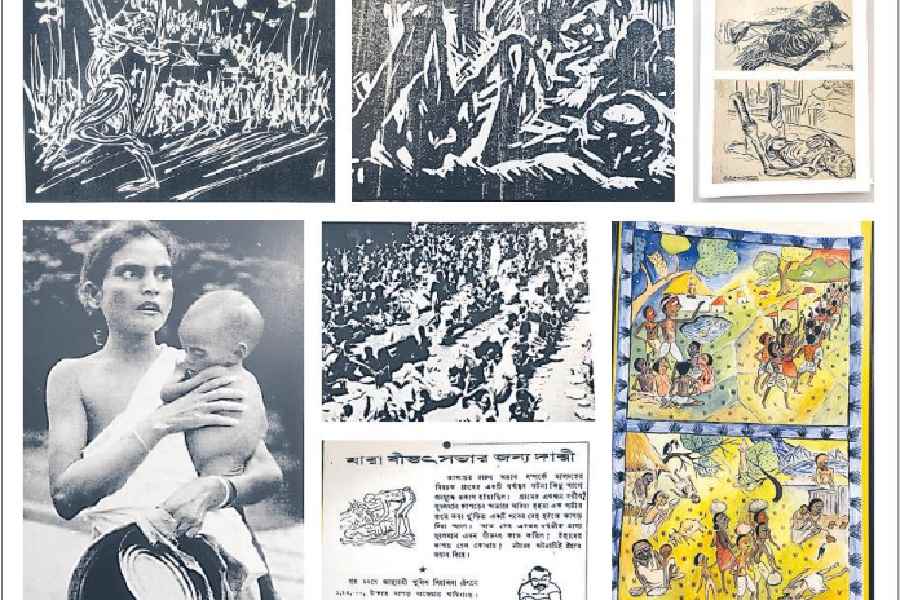An exhibition remembering the 1943 Bengal Famine was held at Jadunath Bhavan Museum and Resource Centre from January 6 to 8.
The centre also held seminars, film screenings and a walk remembering the famine.
The two-day exhibition, organised by the Royal Society of Edinburgh, was a collection of newspaper reports, etchings, paintings and photographs chronicling the famine during which 2.1 to 3 million people perished.
Called an anthropogenic famine, it led to large-scale displacement of people from the rural areas to city centres where people walked miles in search of relief.
On the heels of the Second World War, impoverished with stagnating agricultural produce, and staggering inflation because of expensive war financing, and mindless hoarding by unscrupulous traders, millions were left starving. As hordes moved to the city, the common refrain on the roads in those days was ‘Fyan dao’ or ‘Give us rice water’. Artists, writers, and creative people documented this human tragedy which was part of the exhibition.
’43 in Mind: Re-Visiting the Great Famine brought together the works of Chittaprasad, Somnath Hore, Ramkinkar Baij, Zainul Abedin, and Gobardhan Ash documenting the catastrophe. Reproductions of photographs by Tarakchandra Das taken in the rural areas as well as the streets of Calcutta showed how people with their rib cages showing, with little on them trudging miles to city centres to die on the pavements eventually.
Newspaper reports and photographs told stories of desperation and deprivation. One particular report spoke of how a poor Muslim villager in Malda was driven to dig up a grave and take away the clothes from a corpse to cover himself. At the same time, the police had confiscated clothes valued at Rs 1,25,000 from a businessman at Sealdah station, said the same report.
Not just his drawings, reproductions of Chittaprasad’s reports were also on display that elaborated on how people from Medinipur, and Chattagram were dying, and how there were shortages of quinine leading to malarial deaths.
Reports of how handloom workers had turned into daily labourers, Khitishprasad Chattopadhyay’s essay on the issues of reconstructing Bengal and even the reproduction of an advertisement by Mahalakshmi Cotton Mills pledging to give cloth at reduced prices made the exhibition varied and interesting.
While most of the reproductions were in black and white, a colourful patachitra by Ajay Basu was a contrast to the rest of the exhibition.
